
ICCROM_03_PublicAdvocacy_en
.pdf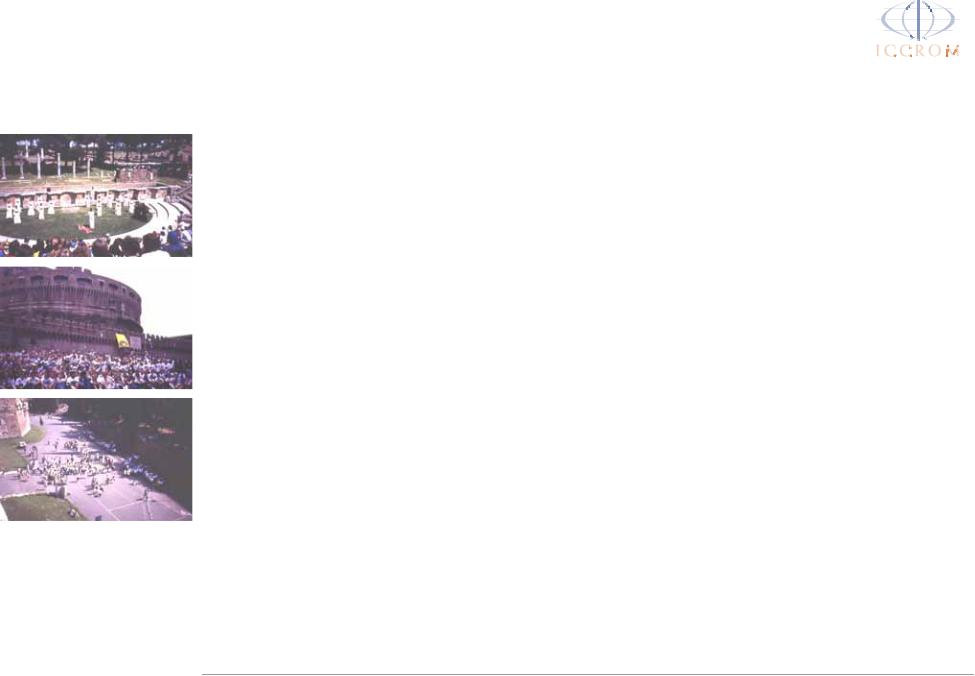
I C C R O M a n d P u b l i c A d v o c a c y : I C C R O M P r o j e c t s : Y o u t h
4) Student Exchange: All Roads Lead to Rome
Project Focus
Awareness of the cultural similarity based on shared Roman roots of many different European countries. The creation of a better climate for cross-cultural cooperation and understanding.
Target Group
•Students age 15-18 from schools in cities across Europe.
Brief Outline
4.To inventory and analyse all the didactic material published by museums with Roman art collections amongst the different partner countries, with a view to initiating a museum network concerned with the interpretation of Roman life.
5.To disseminate information via the internet to reach a wide public audience.
Background Description
importance of Rome to an artist’s career; and the influence of Rome on modern and contemporary history.
Over the course of two years, the schools and cultural organizations created a wide variety of programmes to raise public awareness about the Roman roots of their culture. These projects included theatre productions, banquets, archaeological projects, creating mosaics, making clothes and shoes, writing and research projects, art exhibitions, and much more.
In partnership with museums and other |
All |
Roads |
Lead |
to |
Rome |
was a |
All Roads Lead to Rome culminated |
||||||||||||||
European |
cultural |
heritage |
awareness |
in a grand |
group meeting |
of all |
400 |
||||||||||||||
cultural organizations students in cities |
|||||||||||||||||||||
programme launched by the Committee |
student |
participants in Rome. Over |
|||||||||||||||||||
all across |
Europe |
undertook various |
|||||||||||||||||||
for Education and Cultural Action of the |
several |
|
days |
students |
shared |
||||||||||||||||
projects |
in their |
classrooms |
and |
|
|||||||||||||||||
International |
Council |
of |
Museums |
presentations of |
their |
projects |
in |
||||||||||||||
throughout their cities to learn |
about |
||||||||||||||||||||
(ICOM-CECA) in 1996, and it continued |
various |
historic |
Roman |
settings |
|||||||||||||||||
their ancient Roman past. Then all the |
|||||||||||||||||||||
until |
1998. The |
project |
involved |
high- |
including Ostia Antica, Hadrian’s Villa at |
||||||||||||||||
participating students met at the Forum |
|||||||||||||||||||||
school students, |
museums, |
and |
other |
Tivoli, |
the |
Roman |
Forum, |
and |
the |
||||||||||||
in Rome to share their learning. |
|
||||||||||||||||||||
|
cultural |
organizations |
from |
Austria, |
Museo Nazionale di Castel Sant’Angelo. |
||||||||||||||||
The project had five goals: |
|
||||||||||||||||||||
|
Belgium, France, Germany, Italy, Spain |
The exhibition of student works at the |
|||||||||||||||||||
|
|
|
|
||||||||||||||||||
1. To encourage students to explore |
and the United Kingdom. ICCROM was |
Museo Nazionale di Castel Sant’Angelo |
|||||||||||||||||||
the common roots of European |
a key partner on Italy’s behalf. |
|
|
was also open to the public. |
|
|
|||||||||||||||
cultural identity. |
|
|
In each city, students addressed |
ICCROM was responsible for organizing |
|||||||||||||||||
|
|
|
|
||||||||||||||||||
2. To raise cultural awareness |
|
various themes based on their Roman |
the interaction activities at the Roman |
||||||||||||||||||
among students and convince |
|
roots, including: the impact of Roman |
Forum. All 400 students were pre- |
||||||||||||||||||
them of the importance of saving |
civilization on present-day cultures; |
assigned to international teams, named |
|||||||||||||||||||
cultural heritage through |
|
Roman roads, their present state, and |
after the Roman courts. Each team had |
||||||||||||||||||
preventive conservation. |
|
the links they have with contemporary |
to work together to complete the |
||||||||||||||||||
3. To establish an international |
|
information networks; the preservation |
daylong |
historical |
quiz |
about |
the |
||||||||||||||
|
of Roman heritage given present urban |
Forum. Winning teams received prizes, |
|||||||||||||||||||
policy regarding good quality |
|
||||||||||||||||||||
|
development; tourism versus the con- |
such as t-shirts, hats, and other items |
|||||||||||||||||||
educational publications in |
|
||||||||||||||||||||
|
servation |
of |
cultural |
heritage; |
the |
commemorating the event. |
|
|
|
||||||||||||
museums. |
|
|
|
|
|
||||||||||||||||
|
|
|
|
|
|
|
|
|
|
|
|
|
|
|
|
|
|
|
|||
|
|
|
|
|
|
|
|
|
|
|
|
|
|
Prepared by Naomi Grattan. |
© ICCROM 2004 |
||||||
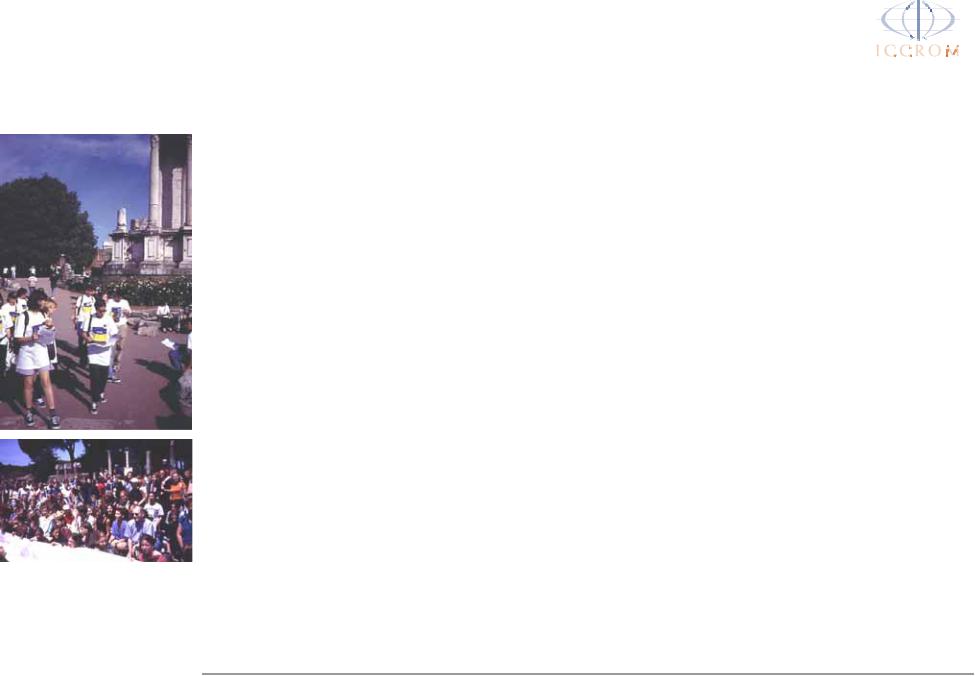
I C C R O M a n d P u b l i c A d v o c a c y : I C C R O M P r o j e c t s : Y o u t h
4) Student Exchange: Suggested Steps
A note on ICCROM’s |
the day of the event – creating bonds |
|||
participation |
is important. |
|
|
|
All Roads Lead to Rome was a large |
• Create the quiz (and/or other |
|||
project organised chiefly by ICOM- |
activities). ICCROM’s quiz required |
|||
CECA. These suggested steps reflect |
students to find various key locations |
|||
ICCROM’s participation in the project as |
in the forum and answer questions. A |
|||
the organiser of the daylong student |
booklet was developed containing a |
|||
exchange event at the Forum. This |
page for each quiz-stop detailing the |
|||
type of interactive learning project |
function of the structure and giving |
|||
could be used to get students from |
clues as to what it might look like. |
|||
different classes, different schools, and |
Each page also contained brief |
|||
different cities to work together, as well |
information about the historical role |
|||
as students from different countries. |
of the location, followed by several |
|||
The aim is to encourage students to |
questions. |
|
|
|
learn about each other and create |
• Create a map of the location where |
|||
friendships while learning about shared |
you want to hold the event. ICCROM |
|||
cultural roots. ICCROM had the |
developed a map of the Forum that |
|||
students work together in multi- |
only showed building shapes and |
|||
national groups to solve a historical |
other physical landmarks, |
without |
||
quiz based on the Forum. |
names, or any text information, to |
|||
Before the project |
require students to work together to |
|||
navigate the Forum, and to work out |
||||
• Establish an organizing committee. |
what structures were used for what |
|||
Invite individual classes, schools and |
purposes. |
|
|
|
or cities to participate. Connect with |
• Assign students to groups (five to |
|||
the appropriate level of government, |
ten works well) for the activity, |
|||
whether municipal, provincial, or |
mixing students from the different |
|||
national. Invite experts to contribute |
schools and cities. Try to ensure that |
|||
to the creation of the student |
there is at least one common |
|||
activities. |
language |
among |
them. |
During |
• Establish a timeline, this type of |
ICCROM’s All Roads Lead to Rome |
|||
activity can either be very short, or it |
project, student groups were labeled |
|||
can take a full day. Regardless, give |
with the five Roman courts: |
|||
students plenty of socializing time on |
Britannica, |
Gallica, |
Germanica, |
|
|
Hispanica, and Italica. |
|
|
|
• Arrange for prepared guides to stand at each quiz location to answer student questions. Consider getting the guides to play the role of a person who might have used the site.
During the project
•Action phase: Assign students to their groups; make sure that each student gets a map and a quiz.
•Consider asking students to dress in historical costumes.
•Students complete the quiz tour of the site. Students have to read the text, ask questions of the guide, and answer the questions as a team.
•Once they have finished, award prizes to all those with correct entries.
•Consider asking each group to create a skit demonstrating their group identity, and get them to perform them after the quiz.
Follow-up
There are a number of follow-up activities you could do, including:
•Set up a website for exchange of information after the event. Post pictures, and generally foster relationships between students. Include a message board.
Prepared by Naomi Grattan. © ICCROM 2004
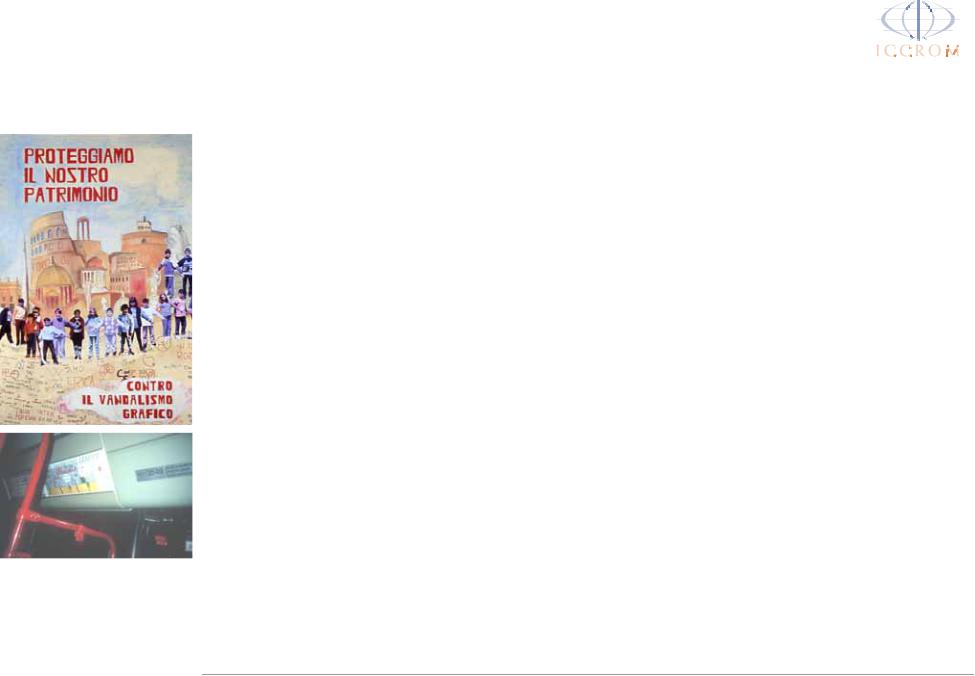
I C C R O M a n d P u b l i c A d v o c a c y : I C C R O M P r o j e c t s : Y o u t h
5) Poster Competition: Stop Graffiti
Project Focus
The threats, particularly vandalism and graffiti, which face urban cultural heritage. Using a poster competition as a learning tool.
Target Group
• Students age 7-13.
Brief Outline
Students in Rome spent four months in class learning about the value of cultural heritage and the threats it faces. The course focused on graffiti, the damage it causes, and the issues involved in removing it. Each student then created an anti-graffiti poster for the City of Rome, and learning materials were developed for teachers.
The project had three goals:
1.To heighten student awareness of the cultural heritage surrounding them in their city.
2.To teach students that heritage is fragile and is threatened by various environmental and human factors, including graffiti.
3.To discourage them from creating graffiti, and to encourage them to persuade their peers to stop doing graffiti.
Background Description
In 1995 the City of Rome conducted a study and found that 7,000 square meters of the city were covered with graffiti. To address the problem the City organised a seminar, at which it was decided to create a public awareness campaign. The City invited ICCROM to conduct a campaign to increase student awareness about the problems caused by graffiti.
ICCROM and the Istituto Centrale del Restauro (ICR) organised a citywide poster competition for school children. ICR created a video for students, and ICCROM prepared guidelines and didactic materials for teachers (see Suggested Reading in the Further References section). ICCROM also organised lectures for schools if they were interested.
The Graffiti Stop poster competition and campaign targeted two key audiences via two different methods.
First, schools targeted students by conducting an extensive education campaign about the damage that graffiti, among other human and environmental agents, causes stonewalls and monuments. Students were motivated to learn about graffiti, as they were all eligible to win prizes in the competition.
Second, the City printed the winning posters and used them in a public awareness campaign, displaying them on buses, and other public spaces throughout Rome. The City also printed several of the winning posters on milk cartons – a creative method of getting the message into homes.
Each student winner received prizes, such as commemorative plaques, backpacks, t-shirts, agendas and so on. The prizes repeated the Graffiti Stop slogans, which further promoted the campaign’s anti-graffiti message. The students were not awarded prize money since the other prizes were more effective tools for reinforcing the campaign’s goals.
The poster competition worked well, and the schools enjoyed participating. However, teachers needed to be encouraged to place strong emphasis on the learning that comes before the poster creation. The poster competition merely created the opportunity to teach students about graffiti and to discuss the damages it causes fragile cultural heritage.
Using the student posters for a public awareness campaign was highly successful, but any resulting behavioural change among the general public was impossible to measure.
Prepared by Naomi Grattan. © ICCROM 2004
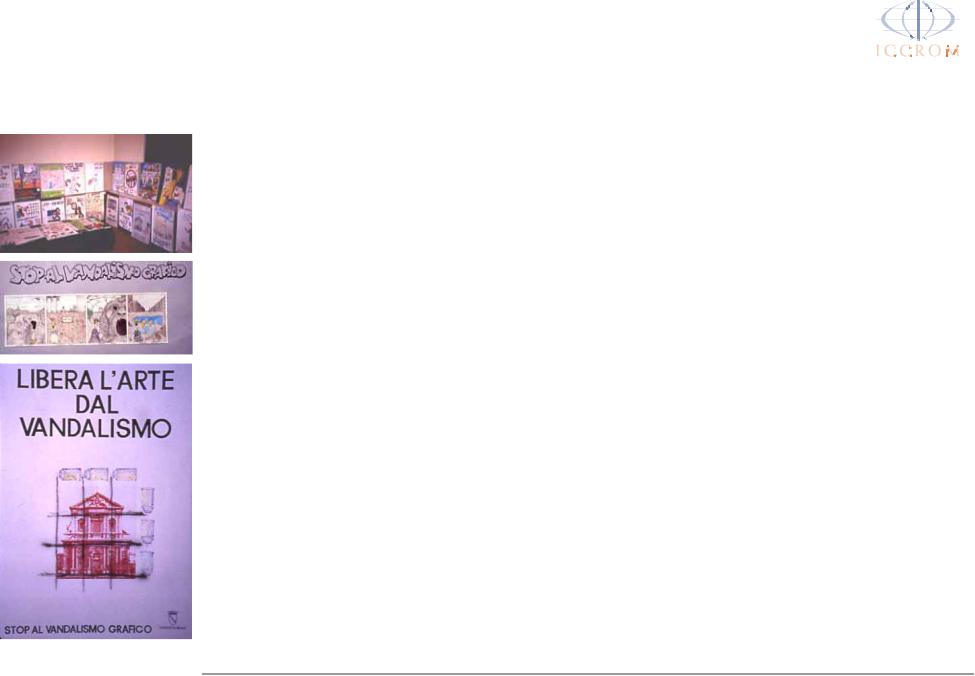
I C C R O M a n d P u b l i c A d v o c a c y : I C C R O M P r o j e c t s : Y o u t h
5) Poster Competition: Suggested Steps
Before the project
•Determine a conservation or heritage-related subject for your poster competition. Remember the competition is just a tool to motivate students to learn about the selected topic – it should not be an end in itself!
•Establish a committee, involving either other schools across your city, or from other cities and countries.
•Set competition guidelines, plan a location to collect the entries, and select a jury. Invite a public relations or graphic design specialist, as well as heritage and conservation experts to sit on the jury.
•Ensure that any didactic material prepared by the committee for teachers is distributed before the school year begins, so teachers have enough time to plan multidisciplinary lessons.
During the project
• Study phase: In the classroom, begin by talking with students about heritage, and what cultural heritage means. Discuss the idea of transmitting cultural heritage to future generations. Ask students why they feel heritage is important, and why it must be conserved. Discuss the differences and similarities
between museums, monuments, historical sites, archives, libraries, and so on.
•Discuss what endangers heritage, such as: climatic conditions (ice, wind, sun), pollution (acid rain, heavy traffic), fires (accidental and deliberate), inappropriate changes and reconstructions, vandalism, theft, abandonment, ignorance, and so on. (See Further References for a comprehensive chart.)
•Introduce and discuss the concepts of preservation, conservation, and restoration. Consider inviting professionals into your classroom to talk with students.
•Action phase: Explore the heritage around your school in relation to the focus of your poster competition. Look for monuments in the school neighborhood. Ask students which ones they find the most interesting, and why, and compare their thoughts. Note the oldest and their shared characteristics that distinguish them from newer buildings and monuments (styles, materials, sizes). Note the state of preservation of the buildings.
•Discuss how young people contribute to the deterioration of heritage, via vandalism and graffiti. Discuss why young people do such
things, and how they could be influenced to change their behaviour.
•Competition: Get the students to create posters. Encourage them to choose a clear and provocative image, to use strong colours, and to include a bold slogan. Remind them that it should be clearly legible from a distance.
•Convene a meeting of the jury to review the posters and select winners based on the criteria. Consider having several different categories.
Follow-up
There are a number of follow-up activities you could do, including:
•Hold an awards celebration, and arrange with your city (and any other participating cities) to exhibit the winning entries.
•Consider asking the cities involved to print winning posters for use in a public awareness campaign.
•Consider printing some winning entries in a catalogue, or on t- shirts, or other items students could use, such as day-planners or lunch-bags.
•Set up a regional inter-school network to encourage the exchange of info about heritage teaching in the classroom.
Prepared by Naomi Grattan. © ICCROM 2004
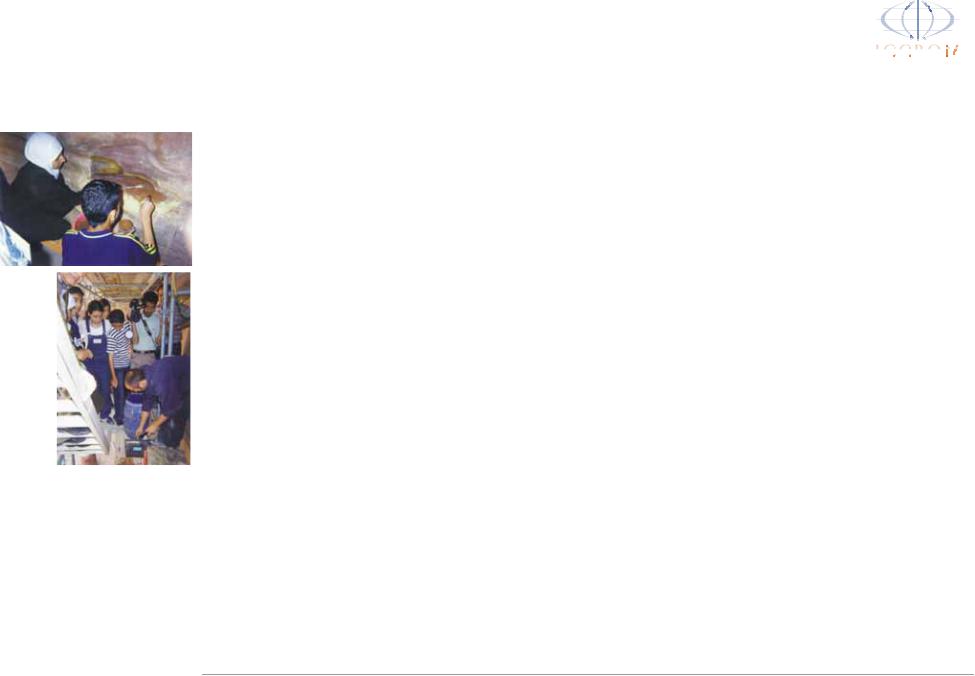
I C C R O M a n d P u b l i c A d v o c a c y : I C C R O M P r o j e c t s : Y o u t h
6) On-site Course: The Subregional World Heritage Skill 
















 Development Course for ASPnet Students in the Arab Region
Development Course for ASPnet Students in the Arab Region
Project Focus
On-going heritage conservation issues at archaeological sites, and the issues in managing a fragile site open to the public.
Target Group
•Students age 14-16 from schools close to archaeological sites.
Brief Outline
A practical, full-time course, held at the archaeological site of Petra, in Jordan, conducted in close collaboration with site managers and other conservation professionals.
The course had three goals:
1.To introduce students to the problems involved in managing an archaeological site that is open to the public.
2.To explore the complex relationships between the site and its stakeholders, including the local people, conservators, tourism agencies, and others.
3.To help students feel ownership of, and responsibility towards, fragile sites in their neighbourhoods.
Background Description
The Subregional World Heritage Skill Development Training Course was a four-day course, organized by UNESCO and ICCROM (and various related departments), at Petra, Jordan, in April 2002. Twenty students and five teachers from Lebanon, Syria, and Jordan participated. The course was held in Arabic, and ICCROM created the supporting materials. The course aimed to establish a model for co-operation between schools and archaeological site managers, and to develop a new approach to including heritage education in school curricula.
The course content focused on:
•the role of the World Heritage Centre in promoting and preserving cultural and natural heritage,
•the history of Petra and Nabatean culture,
•the dangers threatening cultural heritage, particularly Petra,
•the principles and basic methods of conservation,
•the demographics of key stakeholders and their socioeconomic values, and
•the role of communications and increased public awareness in preserving heritage sites.
Each course unit included practical onsite exercises supervised by experts, including consolidating a wall, cleaning stones, and assisting with mosaic restoration. Students held a discussion forum with site stakeholders, including site managers, conservators, tourists, and residents, to explore the complex relationships between the site and the local population.
Students devoted the final course day to creating visitor information and recommendations for improving Petra’s vulnerable state. After the course ICCROM and UNESCO prepared a teacher resource book for introducing heritage education into school curricula in both English and Arabic. It is currently in production
Sponsors included the World Heritage Fund, and the Norwegian Agency for Development Co-operation. The course was held under the patronage of Her Majesty Queen Rania Al-Abdullah of Jordan.
ASPnet
A UNESCO project, the Associated Schools Project Network involves over 7,000 schools in 171 countries. It aims to promote peace and international cooperation through education. ASPnet schools develop innovative approaches to better prepare children for an increasingly complex and global world.
Prepared by Naomi Grattan. © ICCROM 2004
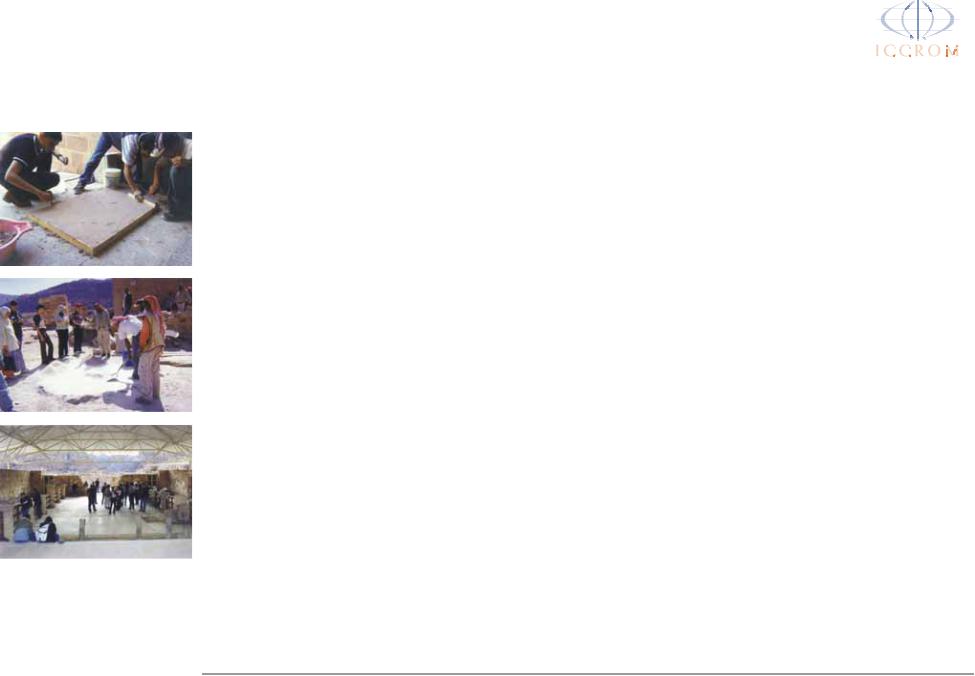
I C C R O M a n d P u b l i c A d v o c a c y : I C C R O M P r o j e c t s : Y o u t h
6) On-site Course: Suggested Steps
Before the project
•Establish a relationship with the management of a suitable site in your region. The closer the site to your school the better, as travel costs can be prohibitively expensive. Consider arranging a sponsor to cover travel costs (or other costs) for the project.
•In partnership with site managers, define a course appropriate to your educational needs that accommodates the site, its physical situation, and expert availability. Define the student activities in partnership with site managers, according to the possibilities (and limits) offered by the site. Plan to include particular parts of the site that reveal conservation problems.
•Determine class size. The number of students in any single activity session should be limited to 20, given the level of supervision required. However, more than one activity session could be undertaken within the same project plan.
•Plan the timeline. Course length will depend largely on those involved and the availability of the experts. The course could either be run over a number of consecutive days, or as a series of regular site visits (i.e. once a week, or every two weeks). Ensure
you allow adequate time for all your planned activities. In April 2002 organizers found that time was too short for all of the planned activities. Allow approximately one year for the entire project.
•Provide teachers with basic information about the conservation of the site: immediate problems, preservation measures, artistic background, and historical information.
•Arrange for site managers and conservators to have extra help with the class so that the students are always completely supervised during the practical sessions.
During the project
•Study phase: Before beginning work at the site, students and teachers must spend some time learning about the site. In class they should address its historical and cultural significance, its development (and deterioration) over time, its principal stakeholders today, the conservation and other problems associated with it, and any on-going preservation activities at the site. At this stage students and teachers should also have a guided site visit.
•Action phase: Under expert guidance, students participate in conservation activities at the site.
They could take measurements, document the state of conservation of various site elements, participate in restoration activities, draw maps, interview visitors, staff, conservators, tourists, local residents and any other site stakeholders, among the many possibilities a given site may offer.
Follow-up
There are a number of follow-up activities you could do, including:
•Establish a regular heritage working day for regional schools.
•Have each school adopt a particular site or monument, and get the students to offer guided tours.
•Set up a regional inter-school network to encourage the exchange of information about heritage teaching in the classroom.
Prepared by Naomi Grattan. © ICCROM 2004
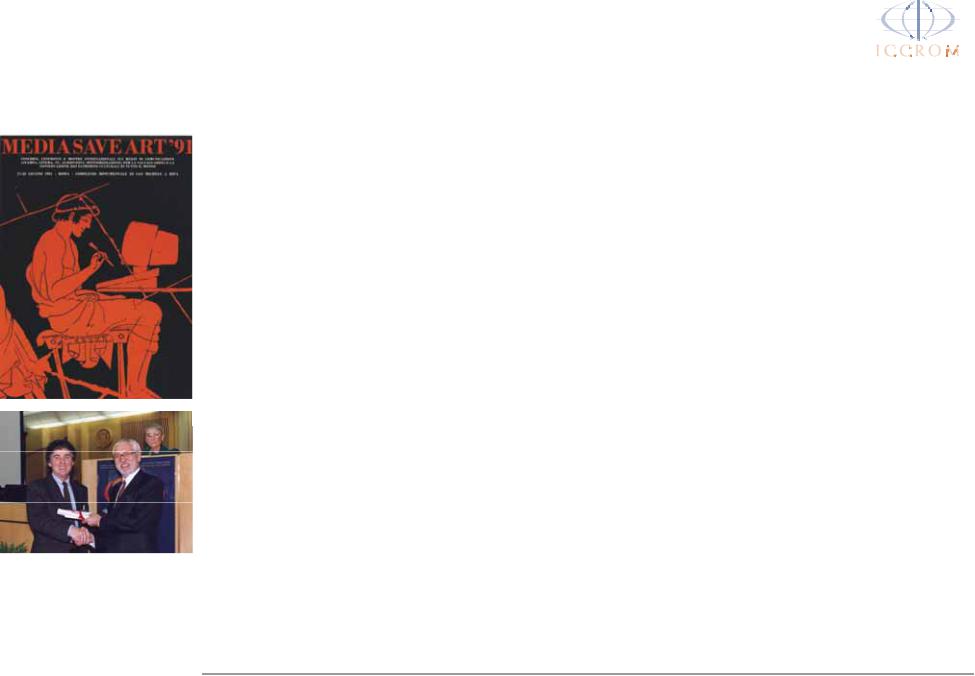
I C C R O M a n d P u b l i c A d v o c a c y : I C C R O M P r o j e c t s : A d u l t s
1) Media Competition: Media Save Art Award
Project Focus |
|
|
The Media Save Art Award was a |
making |
public |
|
engagement |
generated |
|||||||||||||||||||||
To |
draw |
attention |
to the lack of |
cash |
prize |
initiated |
in |
|
response |
to |
by an |
article |
one |
of |
the |
award’s |
|||||||||||||
research on media coverage of heritage |
evaluation |
criteria. |
In |
|
the |
three |
|||||||||||||||||||||||
coverage |
of |
cultural |
heritage |
|
|||||||||||||||||||||||||
conservation. |
In |
1987 |
ICCROM |
succeeding |
competitions |
|
journalists |
||||||||||||||||||||||
preservation issues in mainstream |
|
||||||||||||||||||||||||||||
analyzed |
the |
cultural |
heritage |
and |
were encouraged to include evidence of |
||||||||||||||||||||||||
news media. |
|
|
|
||||||||||||||||||||||||||
|
|
|
preservation content in two Italian and |
public discussion and any other results |
|||||||||||||||||||||||||
|
|
|
|
|
|
|
|||||||||||||||||||||||
Target Groups |
|
|
two |
French |
national |
newspapers. The |
– such as changes to legislation due to |
||||||||||||||||||||||
|
|
results were poor. Only 1.7% and 5% |
public pressure – with their articles. |
||||||||||||||||||||||||||
• |
First, print journalists, and second, |
||||||||||||||||||||||||||||
of articles in the respective arts and |
While sometimes a difficult element to |
||||||||||||||||||||||||||||
|
the general public. |
|
|
culture sections dealt with the |
evaluate, |
including |
public |
|
response |
||||||||||||||||||||
Brief Outline |
|
|
preservation of cultural heritage. Even |
broadened |
the |
scope |
|
of |
|
the |
|||||||||||||||||||
|
|
then, this coverage was often alarmist, |
competition, |
pushing |
journalists |
to |
|||||||||||||||||||||||
A cash prize for journalists to |
tending to cover major tragedies, such |
actively engage their audiences. |
|
|
|||||||||||||||||||||||||
encourage them to produce articles |
as natural disasters causing the loss of |
Thus by the fourth competition the |
|||||||||||||||||||||||||||
about conservation and heritage issues |
priceless collections. |
|
|
|
|
|
categories were changed to Article (an |
||||||||||||||||||||||
for the general public. Intended to |
The award was given the best article |
individual article) and Series (at least |
|||||||||||||||||||||||||||
increase the coverage of conservation |
from anywhere in the world in each of |
two articles presented under the same |
|||||||||||||||||||||||||||
and cultural heritage preservation in |
two |
categories. |
For |
|
the |
first |
title). The articles could be from either |
||||||||||||||||||||||
mainstream media. |
|
|
competition, in 1991, the two cate- |
newspapers or magazines. |
|
|
|
|
|
||||||||||||||||||||
The award had two goals: |
|
gories were daily newspaper and |
Since |
1990 |
ICCROM |
has |
held |
|
the |
||||||||||||||||||||
1. |
|
To increase the amount of |
magazine. The articles had to address |
Media Save Art Award four times. In |
|||||||||||||||||||||||||
|
the |
preservation of |
cultural |
heritage, |
|||||||||||||||||||||||||
|
|
coverage heritage preservation |
2001, the most recent competition, 395 |
||||||||||||||||||||||||||
|
|
and had to be written for the general |
|||||||||||||||||||||||||||
|
|
receives. |
|
|
|
articles |
were |
received |
|
from |
|
56 |
|||||||||||||||||
|
|
|
|
|
public. Articles |
published |
in |
specialist |
|
|
|||||||||||||||||||
2. |
To increase public awareness of |
countries. |
|
|
|
|
|
|
|
|
|
|
|||||||||||||||||
professional |
publications |
were |
not |
|
|
|
|
|
|
|
|
|
|
||||||||||||||||
Following |
the |
third |
|
competition, |
|||||||||||||||||||||||||
|
|
heritage conservation. |
|
eligible. |
|
|
|
|
|
|
|
|
|
||||||||||||||||
|
|
|
|
|
|
|
At first the |
awards |
focused |
solely on |
ICCROM published The |
Press |
and |
the |
|||||||||||||||
Background Description |
Safeguard |
of |
Heritage, |
a |
book |
|
that |
||||||||||||||||||||||
the quality of the articles themselves; |
|
||||||||||||||||||||||||||||
In 1991 ICCROM, in collaboration with |
includes 36 |
of the |
best |
articles |
|||||||||||||||||||||||||
however, |
over |
time |
journalists began |
||||||||||||||||||||||||||
submitted |
to |
|
the |
competition |
from |
||||||||||||||||||||||||
UNESCO |
and |
the Italian |
Council of |
submitting additional materials relating |
|
||||||||||||||||||||||||
newspapers all over the world. (See the |
|||||||||||||||||||||||||||||
Ministers, |
organized |
an |
international |
to public |
discussion |
sparked |
by their |
||||||||||||||||||||||
Suggested |
Reading |
list |
in |
Further |
|||||||||||||||||||||||||
event to mobilize the media in favour |
articles. Given that this type of public |
||||||||||||||||||||||||||||
References.) |
|
|
|
|
|
|
|
|
|
||||||||||||||||||||
of heritage and introduce the world of |
engagement was exactly what ICCROM |
|
|
|
|
|
|
|
|
|
|||||||||||||||||||
|
|
|
|
|
|
|
|
|
|
|
|
||||||||||||||||||
conservation to the general public. |
hoped to stimulate, the Media Save |
|
|
|
|
|
|
|
|
|
|
|
|
||||||||||||||||
|
|
|
|
|
|
|
Art |
Award |
embraced |
this |
shift, |
by |
|
|
|
|
|
|
|
|
|
|
|
|
|||||
Prepared by Naomi Grattan. © ICCROM 2004
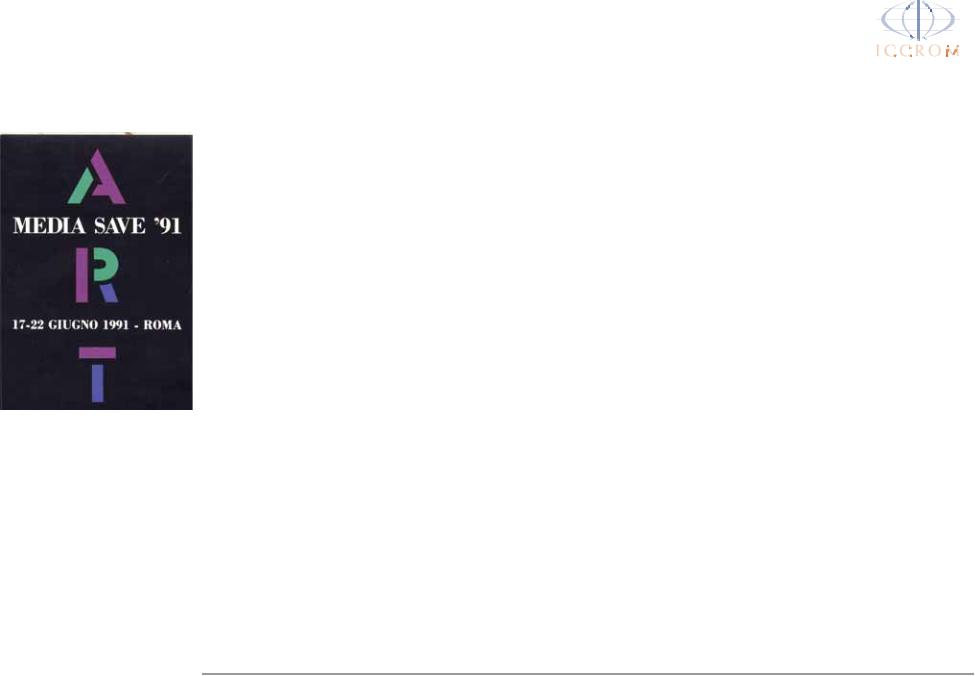
I C C R O M a n d P u b l i c A d v o c a c y : I C C R O M P r o j e c t s : A d u l t s
1) Media Competition: Suggested Steps
Before the project
•Determine the scope you want the contest to have: regional, national, or international, then plan your timeline. It takes at least one year to do well – a fair amount of time is required to inform the appropriate news media outlets and journalists, and for journalists to write and publish articles. ICCROM planned to present the award every two years.
•Establish a committee, including representatives from the various parties involved. Delegate the following tasks: competition coordination, information dissemination to media, entry collection, jury selection, organization of the awards ceremony, and sponsorship. Prepare and print the regulations – including conditions, categories, deadline, etc.
•Set out the rules for the competition. Ensure you establish very clear requirements that meet the objectives of the competition as determined by your committee. Ensure the jury is well-equipped with necessary information to make their selection. The jury should receive all the entries at least one month in advance of the final meeting.
•Establish a media plan (see the
Further References section for a brief guide) for publicizing the
competition to ensure high levels of participation, and to give the awards a high public profile. Be sure you contact the related editors at each major media outlet you want to participate in the project.
• Involve cultural institutions by asking their help in identifying good articles on conservation issues.
During the project
•Diffusion: Plan for one year to get the word out to journalists and to give them sufficient time to write and publish appropriate articles. Be sure to include media agencies, websites, embassies, cultural institutions and other related organizations. Note that asking for translations can be costly for journalists. Consider only asking for a summary of the article to be translated for initial entry. If the article is selected for submission to the jury, request the full translation at that time.
•Collection: Set a deadline for article entry and allow two to three months to receive incoming articles. You will need to collect the articles, create a master list of entrants, and screen the entries based on their conformity to regulations. Meanwhile nominate the jury; the number of members will depend on the number of articles received. The jury should
include experts in several different disciplines: news media, heritage, conservation, public relations, etc.
•Selection: Provide each jury member a copy of the best entries: not more than ten in the Series category, and not more than 30 in the Article category. Give jurors at least one month for review. Each juror makes an independent selection, and then the jury meets in a closed session to select winners.
•Awards: The nature of your awards will depend on your budget and sponsorships. Ideally you should hold a gala evening for the awards ceremony, invite someone well known to present them, such as a Nobel prizewinner.
Follow-up
There are a number of follow-up activities to consider, including:
•Collect and publish the best submissions, covering a wide range of topics and regions.
•Maintain relationships with media and other participants for future competitions.
Prepared by Naomi Grattan. © ICCROM 2004
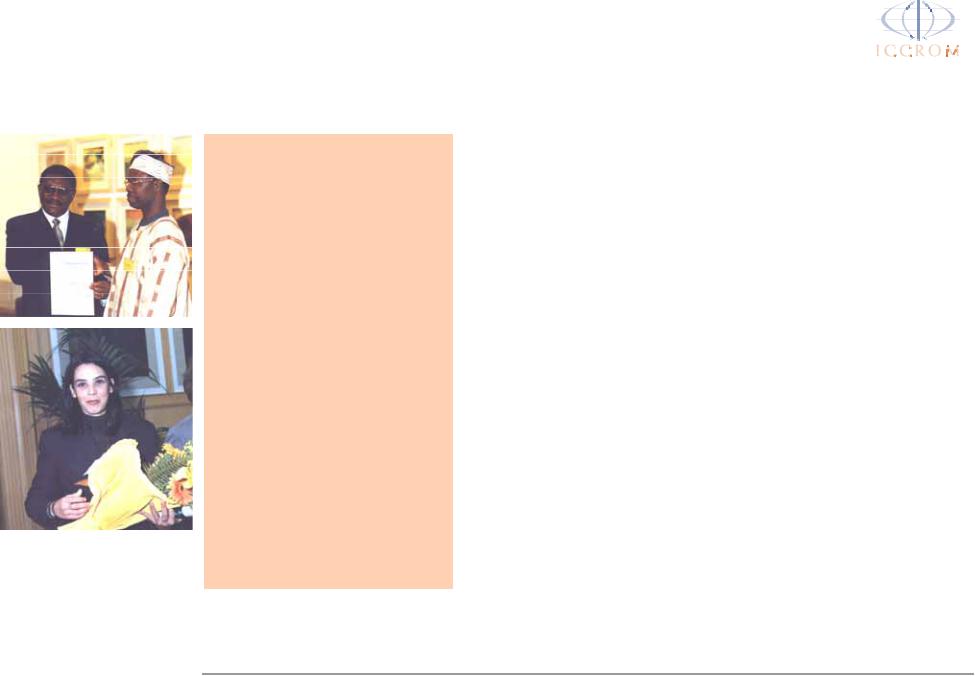
I C C R O M a n d P u b l i c A d v o c a c y : I C C R O M P r o j e c t s : A d u l t s
1) Media Competition: Suggested Steps
Past Winners:
1991
•Laura Lilli, La Repubblica, Italy
•Souren Melikian, International Herald Tribune, USA
1997
•Souhila Hammadi, El Watan, Algeria
•Marisa Ranieri Panetta,
L’Espresso, Italy
1999
•Emmanuel de Roux & RolandPierre Paringaux, Le Monde, France
•Alessandra Mammí, L’Espresso, Italy
2001
•Ozolua Uhakleme, The Guardian, Nigeria
•Owen Clegg, Jordan Times, Jordan
Sample Competition Rules
• The following are the rules created by ICCROM for the fourth edition of the Media Save Art Award:
1.A prize of US$ 4,000 will be awarded to the author of the best article in each of the following categories: Article (individual article) and Series (at least two articles presented under the same title). The articles can be from either newspapers or magazines.
2.No more than five entries may be entered by the same author.
Your article must:
3.Deal with the theme of safeguarding cultural heritage (deterioration, preservation, conservation, and restoration). Cultural heritage is understood as comprising museums, archives, libraries, monuments, and historic and archaeological sites.
4.Be published between June 1 1999 and May 31 2001 in a newspaper or magazine on sale to the general public. Articles published in the specialised press for professionals are not eligible.
5.Be submitted in one original copy, with a summary of 200 words in French or English, if not written in one of these languages. The entire translation is only required for articles admitted for final selection. Photocopies are only admitted if the text, the name of the newspaper or magazine, the author’s name, and the publication date are legible.
6.Reach the address below no later than June 30 2001: ICCROM – Media Save Art, Via di San Michele 13, 00153 Rome, Italy. Phone (39) 06 585 531, Fax (39) 06 585 533 49, www.iccrom.org.
Prepared by Naomi Grattan. © ICCROM 2004
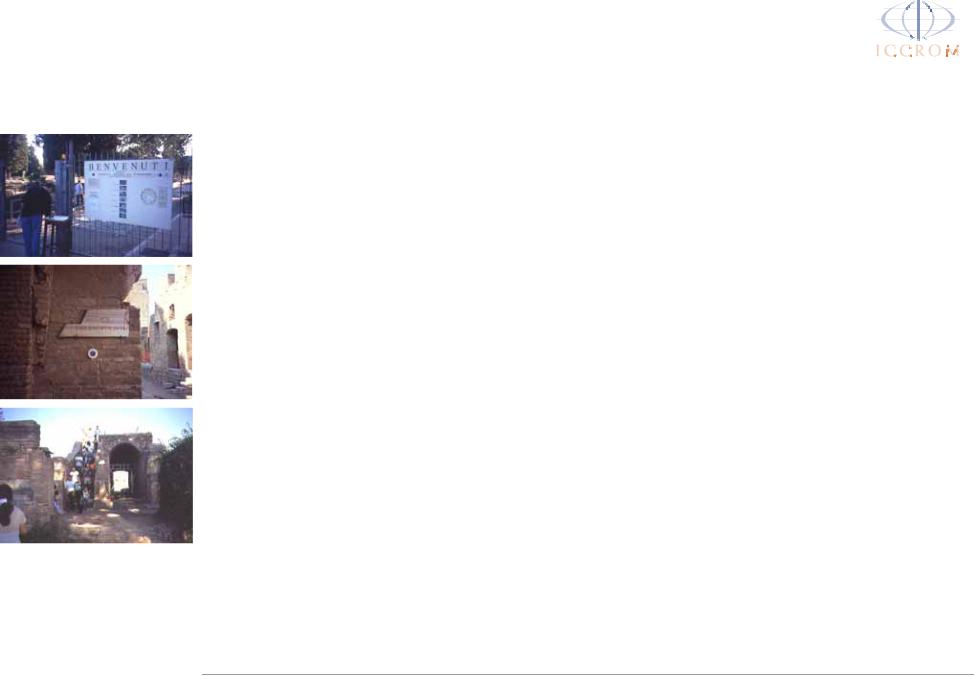
I C C R O M a n d P u b l i c A d v o c a c y : I C C R O M P r o j e c t s : A d u l t s
2) Tour: Let’s Save Our Heritage Together
Project Focus
Environmental problems faced by archaeological sites and museums.
Target Group
•Visitors to an archaeological site or museum. Tour guides are encouraged to highlight conservation issues whenever the opportunity arises. This project can be developed either for the general public, or for specific target groups such as school children.
Brief Outline
The self-guided tour of Ostia Antica, was part of a larger project titled Let’s Save Our Heritage Together. The tour, of a highly-visited archaeological site near Rome, highlighted environmental conservation problems, such as micro-organisms, temperature, vegetation, humidity, vandalism, theft, and so on.
The project had two goals:
1.To make people aware of basic conservation problems, even in museums and at managed sites.
2.To open the work of conservation to the public, sharing the kinds of tasks conservation involves, how much they cost, how long they take, and so on.
Background Description
In 1997, the Université Libre de Bruxelles (ULB) launched a Europewide public awareness project titled
Let’s Save Our Heritage Together, involving museums from several different European countries. ICCROM developed the tour project at Ostia Antica for European Heritage Day in 1997 as part of ULB’s project. The tour project was repeated for ten weeks over the summer of 1998. The project consisted of two parts:
First, experts created a self-guided tour of eight stops at the Ostia Antica site. Each stop focused on a different conservation problem, including mosaic restoration and maintenance, overgrown vegetation (roots damaging mosaics and walls), building erosion due to naturally occurring salts, and so on. A leaflet to accompany the tour and provide detailed information was printed in English, Italian, and French.
Second, a training course for tour guides was held, and 24 guided visits were given. Visitors completed 4,500 questionnaires, with the following results: 90% would recommend the tour to a friend wanting to visit the site, 86% agreed that visitors can contribute to heritage protection, 84% appreciated the information on conservation issues, 79% wanted to receive this kind of information
regularly, 79% agreed that cultural heritage preservation concerns all of us, and 32% understood the fragility of heritage for the first time after following the tour.
While ICCROM participated only at Ostia Antica, other organizations participated in Let’s Save Our Heritage Together throughout Europe. A wide variety of projects were undertaken to highlight conservation problems in museums, such as light, humidity, insects, etc. Upon completion of the project ULB published Public and the Safeguard of Heritage, a book that collected the experiences of all cultural institutions (both museums and archaeological sites) that took part in the larger project. (See the Suggested Reading list in Further References.) It is intended as a reference tool for conservators, site managers, and tourist guides interested in raising public awareness about conservation and the preservation of heritage.
Strategic project partners included: ULB coordinated the project, and the organizing committees included ICCROM, the Archaeological Superintendence of Ostia Antica, the Istituto Centrale del Restauro (ICR), and the European Federation of Tour Guides. Sponsors included the European Commission (the Raphael Program DG X).
Prepared by Naomi Grattan. © ICCROM 2004
